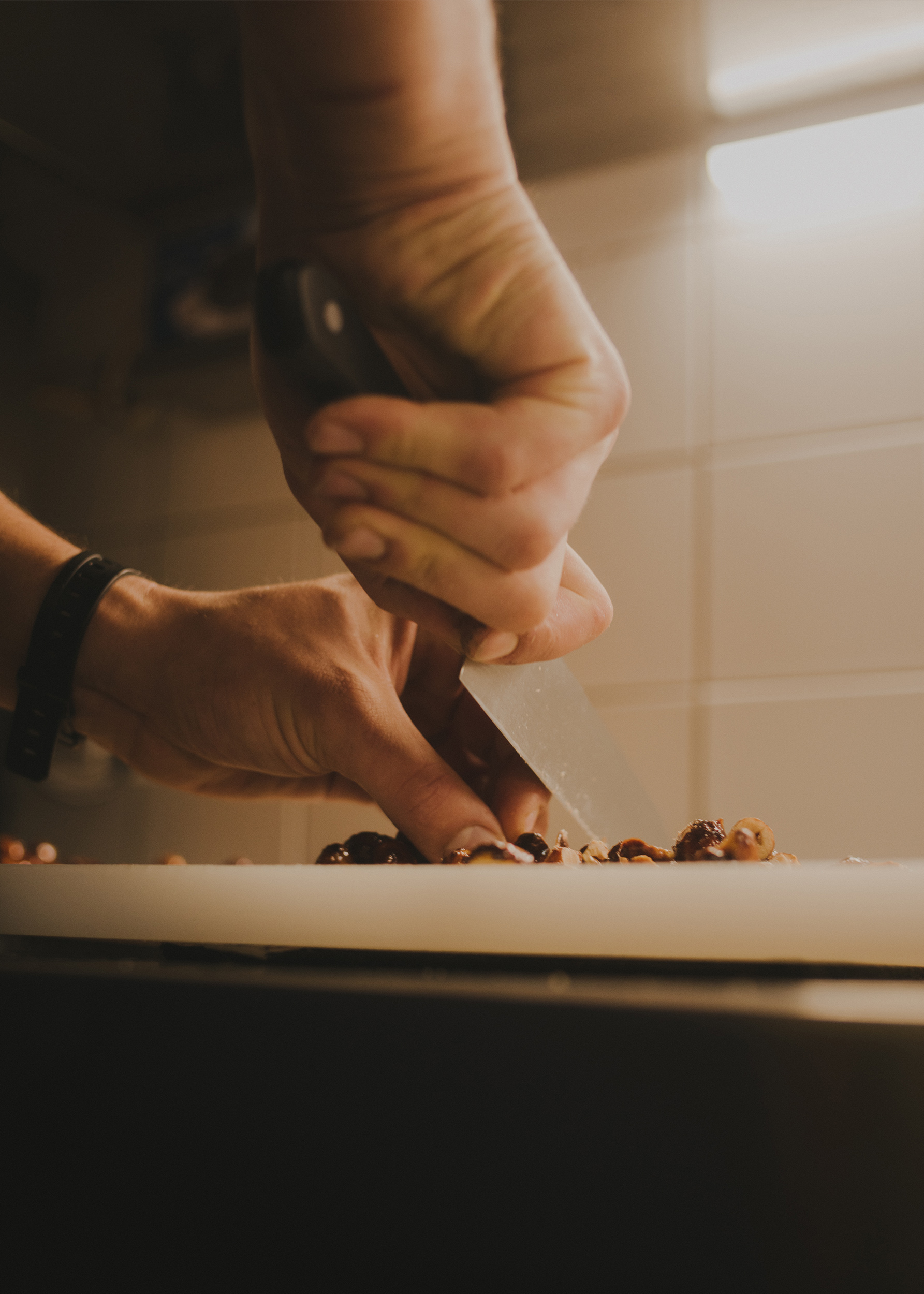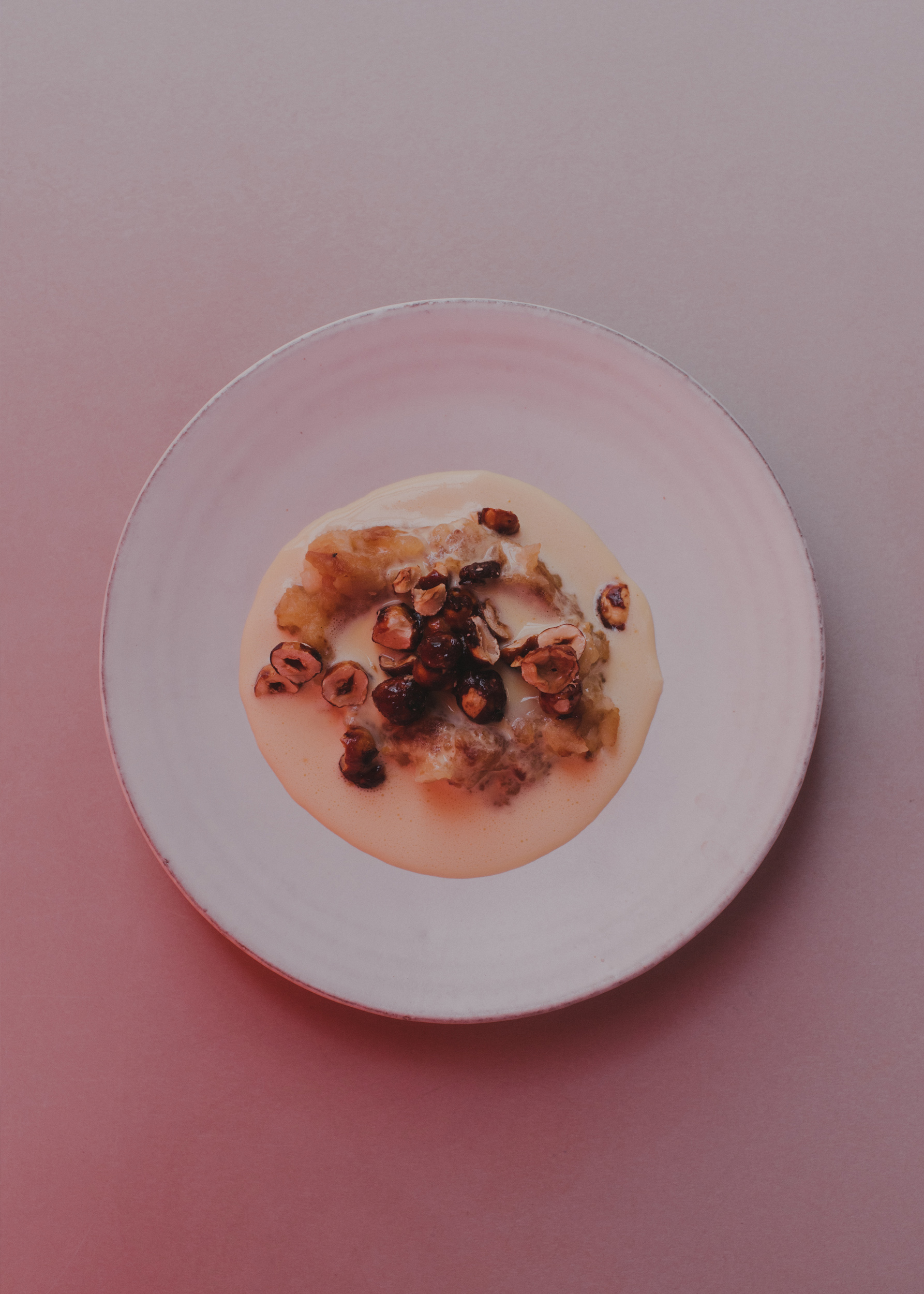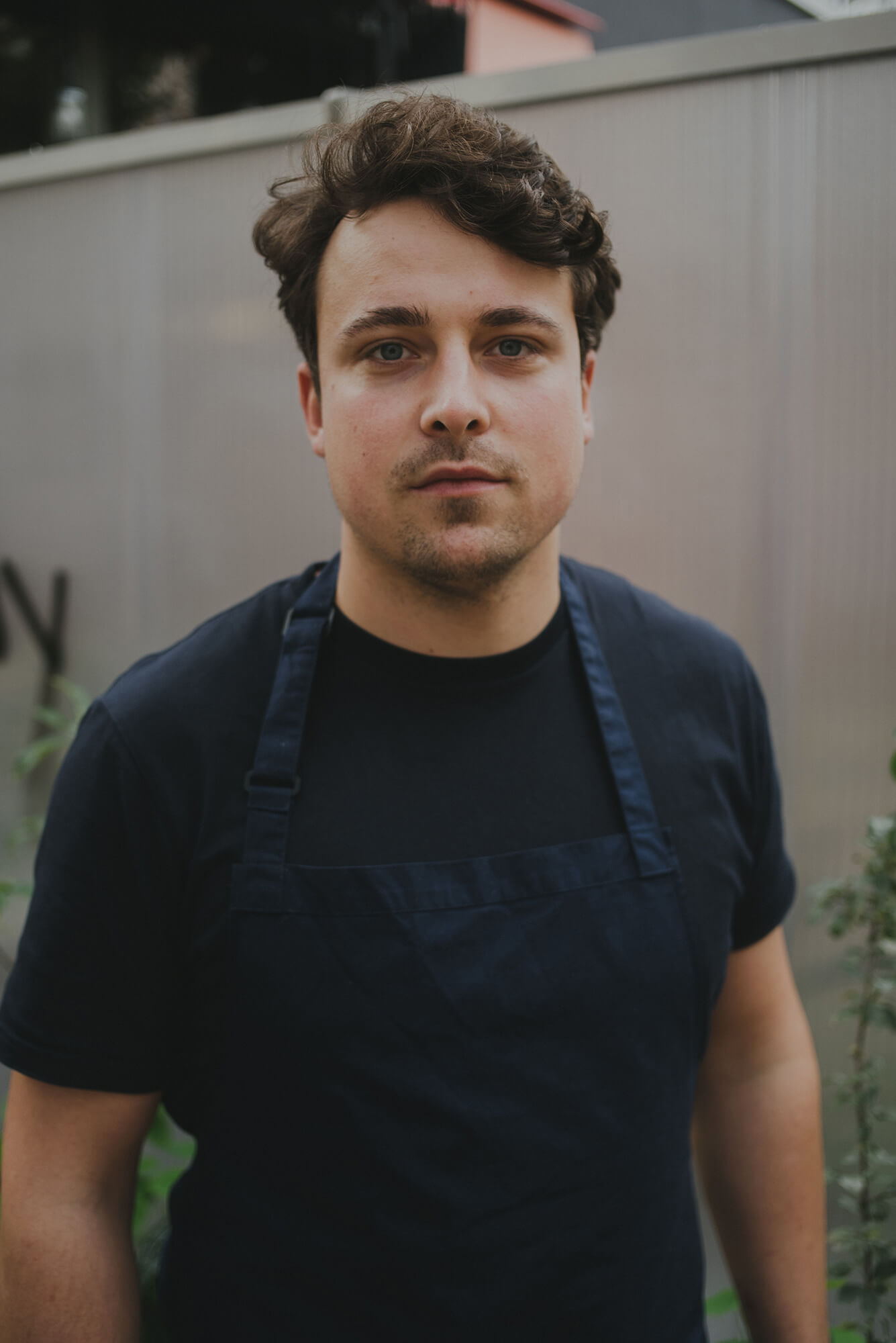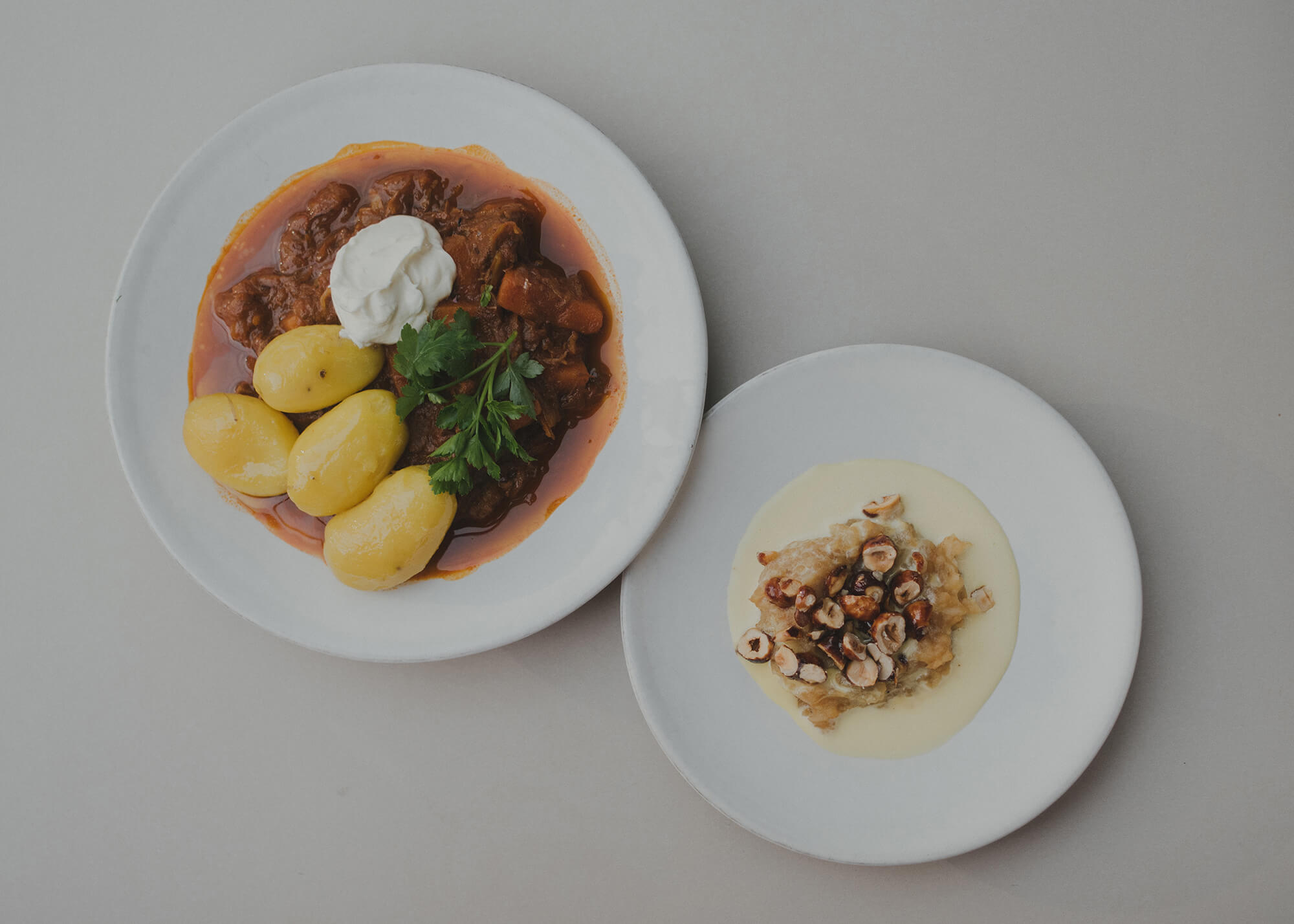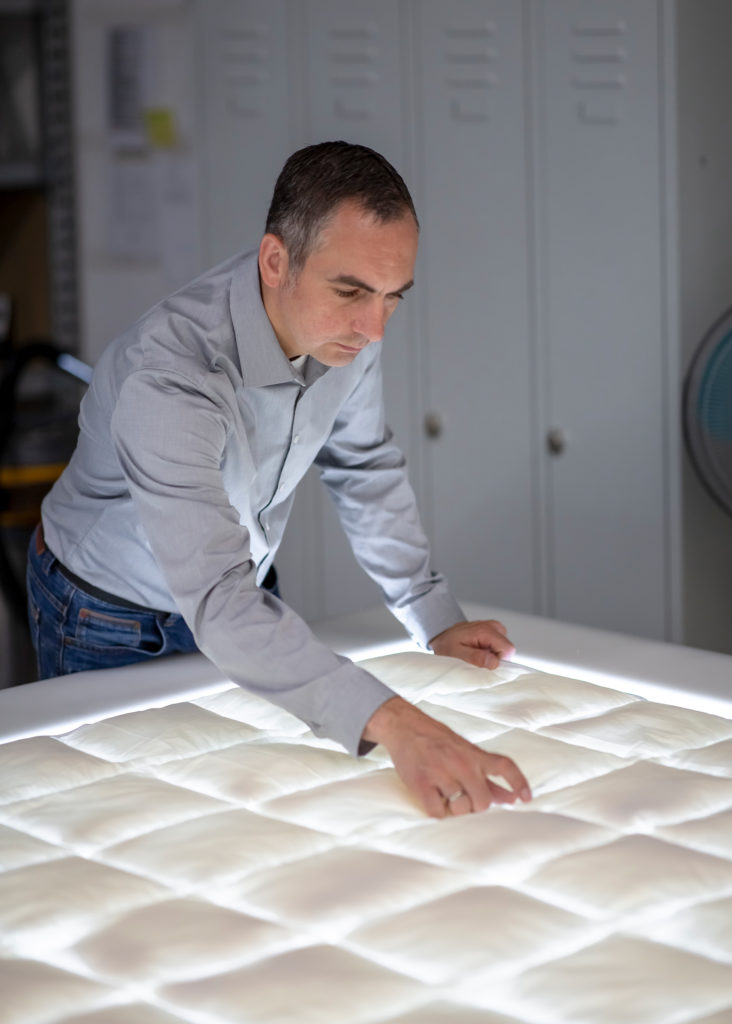When Vadim Otto Ursus tells about his career so far, it is hard to believe that this man is only 28 years old. Having grown up between Berlin-Mitte and Prenzlauer Berg, he soon went abroad after completing his training to learn from the best. After an internship in the 2-star restaurant KOKS on the Faroe Islands, he quickly became Chef de Partie. After a short stop at the Oslo 3-star restaurant Maaemo, Vadim returned to KOKS as Sous Chef. Because the Faroe Islands were too lonely for him in the long run, he went back home and then to Mexico. There he met the people of Noma by chance – a 2-star restaurant in Copenhagen and, according to Vadim, “by far the best and most interesting restaurant in the world” – and was able to spend a few months in their pop-up restaurant in Mexico Tulum work. Back in Berlin a year ago he opened his first own shop: the otto in Prenzlauer Berg. Our author spoke to him about his work and sustainable cooking.
„A wild boar has eaten well all its life and has not cost anyone a lot of space, work or money.“
Vadim, how would you describe your style?
VADIM OTTO URSUSI want to cook the way I like to eat myself. Our dishes are always strongly spicy, I work a lot with roasted aromas. Many of my techniques are relatively experimental – but in the end I want to get around an achievable result that is not only aimed at people who deal a lot with food, but also picks up a large group of tastes.
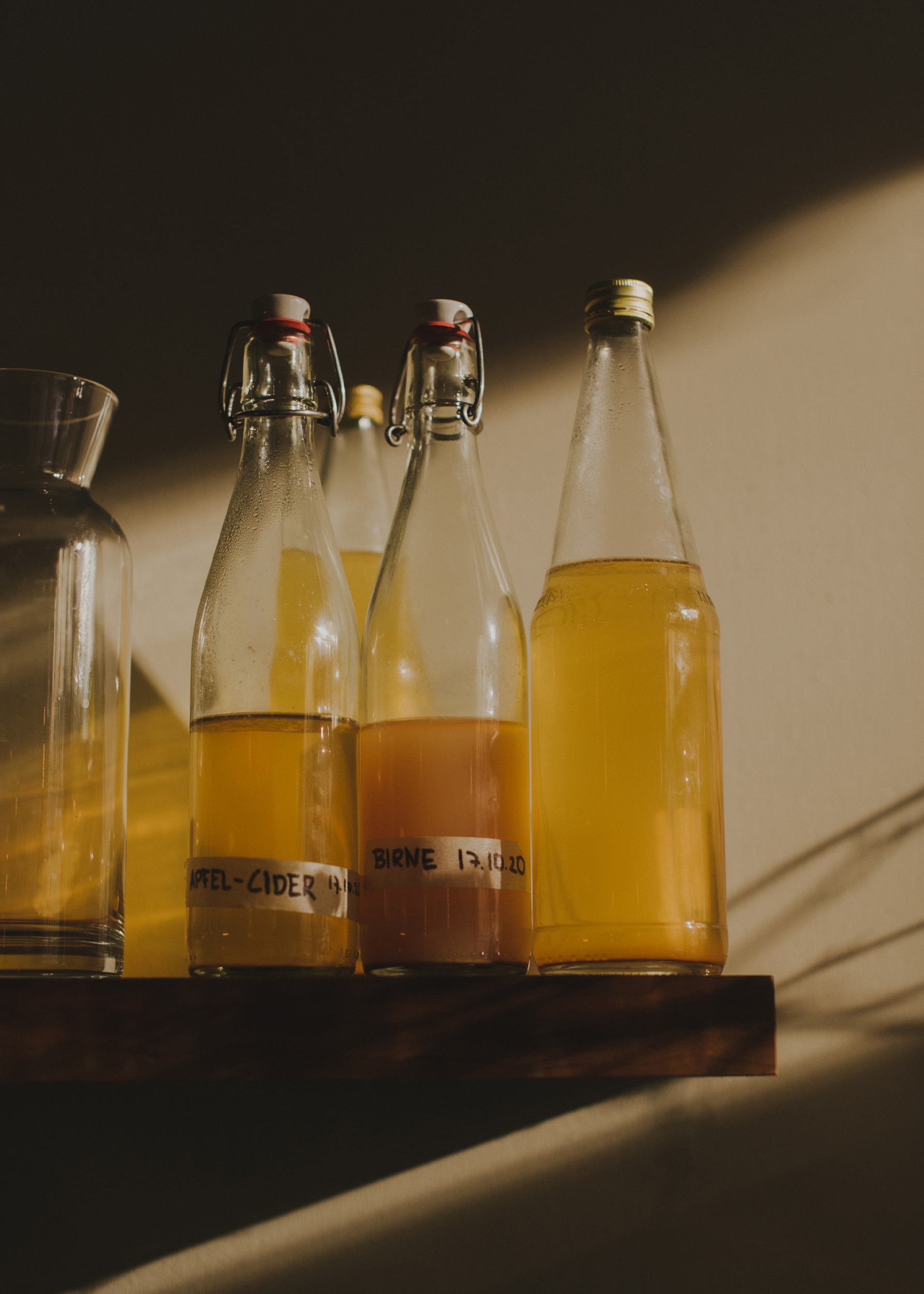
So not only gourmets are welcome at the otto, but everyone?
VADIM OTTO URSUSThe otto should be a communicative place where both the guests and the people who work there feel very comfortable. We want to be casual and affordable. We don’t have long tasting menus, but a small menu from which you can choose freely.
You rely on regional products. Why is that so important to you?
VADIM OTTO URSUSWhen I came back to Berlin after my time abroad, I was lucky enough to get a small piece of land in the Schorfheide with a bungalow on it. From there I went into nature a lot, pickled things, fermented and applied the knowledge I had gained in recent years to products in my area. During this time the bungalow slowly turned into a production kitchen.
I just find it logical to use the things in the immediate vicinity. When I’m in Berlin, there are products from Berlin and Brandenburg. But when I’m somewhere else, things come from there. When I travel, I want to eat regionally. The fact that everything is always available means that society is saturated. I want to convey to my guests what our region is all about. In addition, in my opinion, this is the only way to have really close and good contact with the people who make our products. We mainly work with organic and Demeter farmers who are located near the bungalow.
How does sustainable cooking work?
VADIM OTTO URSUSOn the one hand, by not shipping food around the world. Sustainable cooking also means throwing away as little food as possible. For example, we have a bin that goes back to the farmers to feed the animals with the leftovers. In addition, with every work process we try to think about how the leftovers could be recycled. For example, we make miso paste from our leftover bread and a stock from bones and fish leftovers.
We are in direct contact with the producers and also take away surpluses from them. It’s not about always picking out the pearls, but rather working with what is there. This also includes making the food durable if it cannot be processed directly. We pickle a lot and ferment.
„We work with what is currently there.“
For me, sustainable cooking starts with the choice of product. We mainly use game because it has to be shot one way or another. A wild boar has eaten well all its life and has not cost anyone a lot of space, work or money. For me, this is the most sustainable way to eat meat.
How often do you change your card?
VADIM OTTO URSUSWe have a basic structure of dishes on our menu, most of which remain relatively the same. Depending on the season, only the side dishes or certain components change. The rest of the menu changes every few weeks – just as it makes sense. If a product is no longer available, a new dish has to be found.
Are you more creative in the kitchen because you only cook with regional products?
VADIM OTTO URSUSDefinitive. I think that’s also the reason why I really limit myself to only using products from the region. It encourages you to find alternatives that are just as fun. When we make cheese, for example, we have a lot of whey that we boil down. In the end, we have an incredibly exciting acidic liquid that we can use instead of lemons.
Which season is cooking the most fun?
VADIM OTTO URSUSIn spring, when the herbs slowly sprout. Then we go out ourselves once or twice a week and collect wild herbs and hundreds of flowers. You can really go all out.
Now, unfortunately, winter comes first. What are your favorite vegetables right now?
VADIM OTTO URSUSWhat I really enjoy most in winter is what I put in in summer. Fermented tomatoes and stories like that. Otherwise, I also really like kale, beetroot and sloe.
Szegediner venison goulash with labneh
Labneh
First, add a little salt to the yogurt. Then fill it in a straining cloth and let it drain over a bowl in the refrigerator overnight.
The next morning you have creamy, homemade, Lebanese cream cheese, labneh.
500 g yogurt, full fat
Goulash
For the goulash, the onions are peeled, halved and then steamed in lard in a pan until they are soft and almost set. While stirring a lot, add the tomato paste and then the paprika powder, until both are also slowly starting to set.
Meanwhile, cut the meat from the bone, free it from thick layers of fat and dice it into walnut-sized pieces. Vadim’s tip: don’t throw away the fat, save it for the next time you cook with lard. Deglaze the mixture with red wine and broth and season with plenty of salt, some caraway seeds and a bay leaf. Then add the meat and let everything simmer gently for two hours. Stir every now and then!
Meanwhile, peel the carrots and cut them into walnut-sized pieces. When the time is up, add them together with the sauerkraut and let everything simmer for another half an hour. Then season well!
According to Vadim, a good goulash has to be prepared at least three times and last one night.
When your goulash is ready, serve it with a good spoonful of labneh and a few boiled potatoes or sourdough bread.
1 kg onions
100 g lard
200 g tomato paste
100 g smoked paprika powder
300 ml red wine
300 ml broth
1 kg Wild boar – preferably boneless neck, shoulder or rib
400 g sauerkraut
400 g carrots
laurel
caraway seed
salt
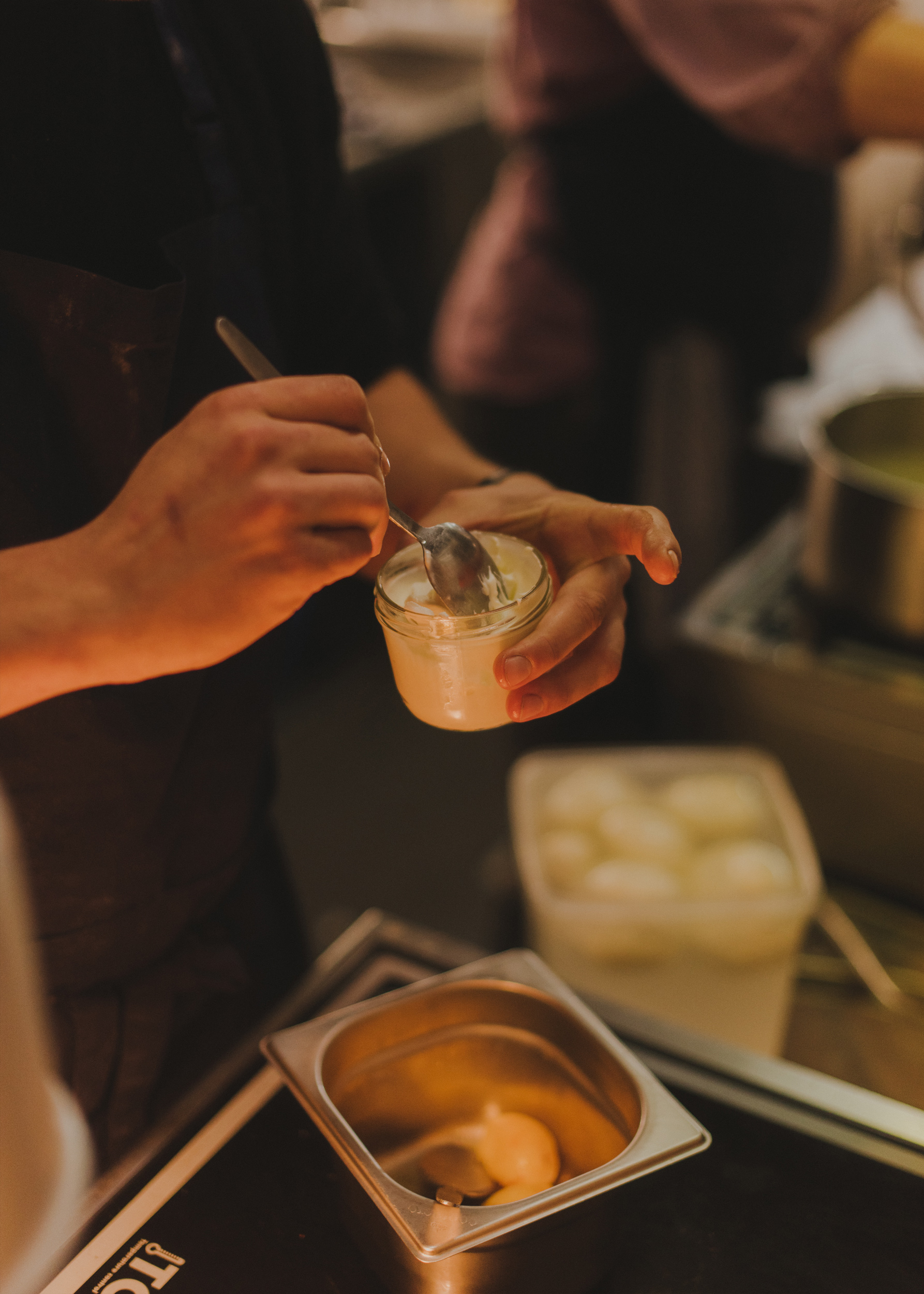
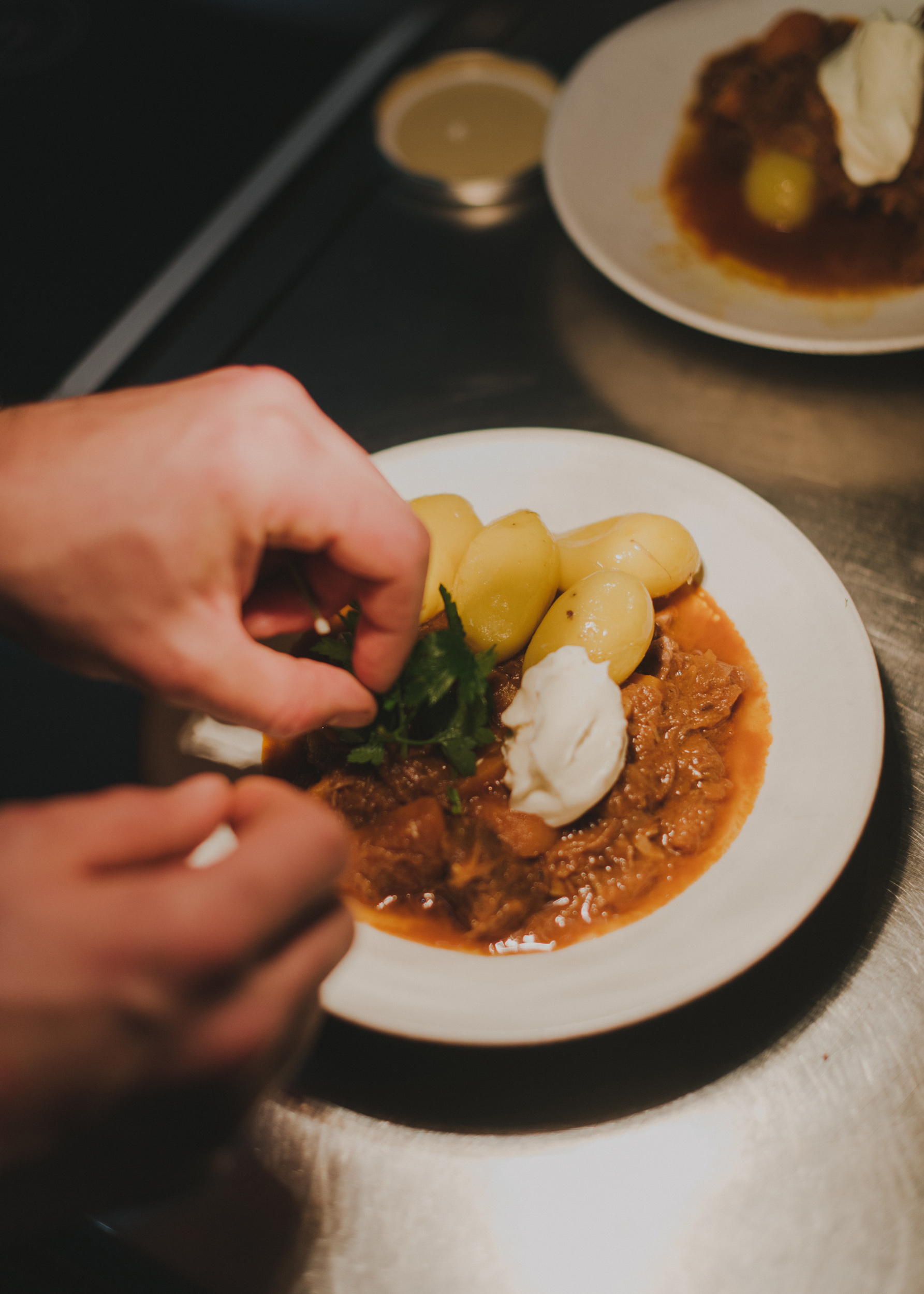
Apple roast with crème anglaise and hazelnut
Crème Anglaise
First the egg yolk is mixed with the milk, the cream and the sugar. Important: the mass should not be whipped!
Then it is heated in a bowl over a saucepan with gently boiling water while stirring until it reaches a temperature of 82 degrees. If you don’t have a thermometer at hand, you can find out whether the mass is thick enough to cover the back of a spoon. If you blow against the back of the spoon, a rose should also appear.
Now pour the mixture through a sieve and put in the cold.
4 egg yolk
100 ml milk
100 ml cream
30 g sugar
Caramelized hazelnut
For the caramelized hazelnut, roast the hazelnuts in the hot oven for about five minutes until the shell cracks open slightly. Then rub them with a tea towel.
Put the nuts together with the sugar and some water in a saucepan, where they simmer until the sugar has crystallized and forms an even, thin film of brown caramel around the nuts.
Then pour a splash of oil and a little salt over the nuts and let them cool on baking paper.
200 g hazelnuts
50 g sugar
Öl
salt
Apple roaster
For the apple roaster, preheat the oven to maximum heat.
At the same time, slowly melt and brown the butter in a saucepan. After that, set them aside.
Now peel, quarter and core the apples and put them in the oven on a flat baking sheet
lined with baking paper. There they are toasted for about 15 minutes until they get a good color at the corners. Vadim says: Color is Flavor!
Then stir the apples with a few tablespoons of brown butter.
The apple roaster is served warm with the cold Crème Anglaise and the caramelized hazelnuts. Don’t forget a pinch of salt!
5 apples, for example Boskop
100 g butter
